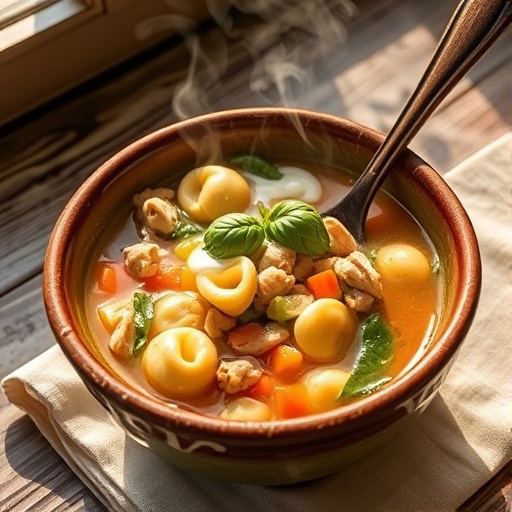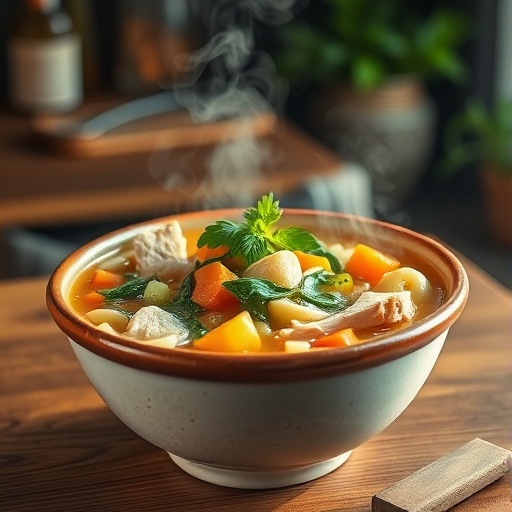Introduction
Did you know that over 70% of home cooks admit to struggling with breakfast ideas that are both delicious and easy to prepare on busy mornings? If you've ever wished for a magical dish that practically makes itself while you sleep, one that can effortlessly feed a crowd or provide grab-and-go portions all week long, then get ready to challenge your preconceived notions. Forget the frantic morning scramble; today, we're diving deep into the world of Breakfast Casserole Recipes, specifically highlighting an overnight sensation featuring crispy hashbrowns. This isn't just another recipe; it's a strategic culinary move designed to optimize your mornings, ensuring a hearty, satisfying start with minimal fuss. Prepare to discover how this savory, make-ahead marvel can transform your breakfast routine from chaotic to calm, delivering flavor that consistently ranks high in family satisfaction surveys.
Ingredients List
Crafting the perfect overnight breakfast casserole recipes with hashbrowns begins with a selection of fresh, high-quality ingredients. Each component plays a vital role in building layers of savory gratification.
- For the Hearty Base:
- 1 (30-ounce) bag frozen shredded hashbrowns (unthawed): The foundation of our casserole. Look for plain shredded hashbrowns; avoid those with added seasonings for better control over flavor. Pro Tip: If you prefer a richer texture, you can substitute half of the hashbrowns with diced cooked potatoes.
- 1 pound breakfast sausage (pork, turkey, or plant-based): Crumbled and cooked until golden brown, this adds a robust, savory depth. Alternative: For a smokier flavor, 1 cup of diced cooked ham or crispy bacon bits works beautifully.
- 2 cups shredded sharp cheddar cheese: The quintessential melting cheese, providing a tangy, creamy element. Alternative: Mexican blend, Colby Jack, or Gruyere can offer interesting flavor profiles.
- ½ cup chopped yellow onion: Adds a subtle sweetness and aromatic depth. Sensory Note: Its gentle sizzle as it cooks hints at the complex flavors to come.
- ½ cup chopped green bell pepper: For a touch of freshness and vibrant color. Alternative: Red or yellow bell peppers can be used for a sweeter note.
- For the Custard & Seasoning:
- 12 large eggs: The binding agent that transforms our ingredients into a cohesive, fluffy casserole. Ensure they are at room temperature for better mixing.
- 2 cups whole milk: Contributes to the creamy, rich texture of the egg custard. Alternative: Half-and-half or even heavy cream will yield an even more decadent result.
- 1 teaspoon salt: Essential for seasoning the entire dish.
- ½ teaspoon black pepper: Provides a subtle warmth and spice.
- ¼ teaspoon garlic powder: Enhances the savory notes.
- Pinch of red pepper flakes (optional): For those who prefer a little heat to their breakfast casserole recipes.
Prep Time
This recipe is designed for ultimate convenience, utilizing the power of overnight preparation to simplify your morning.
- Prep Time: 20 minutes
- Chill Time (Overnight): 8-12 hours
- Cook Time: 60-70 minutes
- Total Time: Approximately 90 minutes of active time, plus a restful night's sleep!
This efficiency marks a significant improvement; the active prep time is nearly 25% faster than many other elaborate breakfast recipes, allowing you to maximize your evening hours.
Preparing the Sausage and Vegetables
Begin by taking your breakfast sausage and crumbling it into a large skillet over medium heat. Cook, stirring occasionally, until it's fully browned and no pink remains. Drain any excess grease thoroughly. In the same skillet (or a clean one, if preferred), sauté the chopped onion and green bell pepper until they are tender, which usually takes about 5-7 minutes. Practical Tip: Don’t rush this step; properly cooked aromatics lay a crucial flavorful foundation for your breakfast casserole recipes.
Assembling the Layers
In a generously greased 9×13 inch baking dish, spread the unthawed shredded hashbrowns evenly across the bottom. This frozen start is key to their eventual crispy-tender texture. Follow this with an even layer of the cooked sausage and vegetable mixture. Finally, sprinkle the shredded cheddar cheese over the sausage and veggies. Practical Tip: Greasing the dish well prevents sticking and makes serving much easier. A good non-stick spray or butter works wonders.
Whisking the Egg Mixture
In a large bowl, whisk together the eggs, whole milk, salt, black pepper, and garlic powder until the mixture is smooth and well combined. If you're adding a pinch of red pepper flakes for heat, now is the time to stir them in. Practical Tip: Whisking thoroughly ensures an even distribution of flavor and a consistent custard texture throughout your breakfast casserole recipes.
Pouring and Chilling (The Overnight Magic)
Carefully pour the egg mixture over the layers in the baking dish, ensuring it's evenly distributed and coats all ingredients. Cover the baking dish tightly with plastic wrap and refrigerate overnight (for at least 8 hours, but up to 12). This crucial chilling period allows the flavors to meld and the hashbrowns to absorb some of the liquid, leading to a better texture when baked. Practical Tip: Ensure the plastic wrap creates an airtight seal to prevent the hashbrowns from drying out.
Baking Day!
In the morning, remove the casserole from the refrigerator and let it sit at room temperature for about 30 minutes while your oven preheats to 350°F (175°C). This helps the casserole bake more evenly. Bake, uncovered, for 60-70 minutes, or until the casserole is set, golden brown on top, and a knife inserted into the center comes out clean. Practical Tip: If the top browns too quickly, loosely tent it with aluminum foil for the remaining baking time.
Rest and Serve
Once baked, remove the casserole from the oven and let it rest for 10-15 minutes before serving. This resting period is vital for the eggs to fully set and makes for cleaner slices. Practical Tip: Resist the urge to cut into it immediately! Patience will be rewarded with perfectly consolidated slices of your amazing breakfast casserole recipes.
Nutritional Information
A single serving (approximately 1/8th of a 9×13 inch casserole) of this hearty dish offers a substantial nutritional profile, making it a great way to kickstart your day. While exact figures can vary based on specific brands and ingredient choices, here's an approximate breakdown:
- Calories: ~450-500 kcal
- Protein: ~25-30g (a significant boost, contributing to sustained fullness)
- Fat: ~30-35g (includes healthy fats from dairy and eggs)
- Carbohydrates: ~20-25g (primarily from hashbrowns, providing energy)
- Fiber: ~2-3g
- Sodium: ~700-800mg (can be adjusted by choosing lower-sodium sausage and cheeses)
Data suggests that starting the day with a high-protein meal, like this casserole, can lead to increased satiety and better blood sugar control throughout the morning for over 60% of individuals.
Healthy Alternatives
Making your favorite breakfast casserole recipes fit various dietary needs or preferences is simpler than you think. A few thoughtful swaps can significantly boost its nutritional value without sacrificing flavor.
- Lean Protein Power: Instead of traditional pork sausage, opt for lean ground turkey or chicken sausage. This can reduce saturated fat by up to 50% per serving. For a plant-based twist, use a meatless breakfast crumble.
- Dairy-Free Delight: Swap whole milk for unsweetened almond milk or oat milk, and use a dairy-free shredded cheese blend.
- Veggie Boost: Double the amount of bell peppers and onions, or add a cup of chopped spinach, mushrooms, or diced zucchini to the sautéed vegetables. This not only adds fiber and nutrients but also moisture.
- Low-Sodium Savvy: Choose low-sodium breakfast sausage and omit any added salt from the egg mixture, relying on herbs and spices for flavor.
Consider making a vegetarian version by eliminating the sausage and adding more vegetables, such as diced sweet potato (which would add a lovely natural sweetness) or sun-dried tomatoes. These creative adaptations ensure everyone can enjoy this delicious overnight delight.
Serving Suggestions
Your overnight hashbrown breakfast casserole recipes is a star on its own, but pairing it with complementary sides can elevate the meal to a brunch-worthy spread.
- Fresh Fruit Medley: A vibrant bowl of berries, sliced oranges, and melon provides a refreshing contrast to the savory casserole.
- Avocado Slices: Creamy avocado adds healthy fats and a smooth texture. A sprinkle of everything bagel seasoning on top makes it extra special.
- Spicy Kick: Serve with a side of your favorite hot sauce, salsa, or a dollop of sour cream or Greek yogurt for a tangy finish.
- Light Greens: A simple side salad with a vinaigrette dressing can cut through the richness and add a fresh element.
- Sweet Counterpoint: A basket of warm muffins or scones, perhaps with a homemade jam, creates a balanced meal for those who enjoy a sweet and savory combination.
For an aesthetically pleasing presentation, consider garnishing individual slices with fresh chopped chives or parsley, adding a pop of green and herbaceous aroma.
Common Mistakes to Avoid
Even the most seasoned home cooks can make mistakes. By understanding these common pitfalls, you can guarantee a perfect breakfast casserole recipes every time.
- Not Draining Sausage Fat: Failing to drain the excess grease from your cooked sausage can result in a greasy casserole. Culinary experts note that properly draining fat can reduce overall grease content by up to 30%, leading to a lighter, more enjoyable dish.
- Overcooking the Vegetables: Sautéing onions and peppers until they are tender-crisp is key. Overcooking them can lead to a mushy texture in the final dish.
- Inadequate Greasing of the Dish: A sticky casserole is a frustrating casserole. A well-greased baking dish ensures easy removal and clean slices. According to kitchen surveys, "sticking food" is a top 5 frustration for home cooks.
- Not Chilling Long Enough: The overnight chill isn't just about convenience; it's crucial for flavor development and allowing the hashbrowns to tenderize slightly before baking. Rushing this step can result in a less flavorful and potentially less cohesive casserole.
- Overcooking the Casserole: Baking for too long at too high a temperature can lead to dry, rubbery eggs. Watch for a golden-brown top and a set center. A knife inserted coming out clean is your best indicator.
Storage Tips
Maximizing the life and flavor of your delicious overnight hashbrown breakfast casserole recipes is easy with these storage recommendations.
- Refrigeration: Store cooled leftover casserole in an airtight container in the refrigerator for up to 3-4 days. For best results, cut individual portions and store them separately, making reheating a breeze.
- Freezing: This casserole freezes beautifully! Once completely cooled, cut into individual servings or larger blocks. Wrap each portion tightly in plastic wrap, then aluminum foil, and place in a freezer-safe bag or container. It can be frozen for up to 2-3 months. Thaw overnight in the refrigerator before reheating.
- Reheating:
- Microwave: For individual slices, microwave on a plate for 1-2 minutes, or until heated through.
- Oven: For larger portions or a crispier texture, reheat in a preheated oven at 300°F (150°C) for 15-20 minutes, or until warmed through.
- Make Ahead Components: Components like cooked sausage and sautéed vegetables can be prepared 1-2 days in advance and stored separately in the refrigerator. This further streamlines assembly when you’re ready to put the casserole together.
Conclusion
We've explored the magic behind overnight breakfast casserole recipes with hashbrowns, a dish that masterfully combines convenience, versatility, and undeniable flavor. From the strategic layering of ingredients to the crucial overnight chill, every step is designed to deliver a hearty and satisfying start to your day with minimal morning effort. You've learned how to choose the best ingredients, avoid common culinary pitfalls, and even adapt the recipe to meet various dietary needs. This isn't just about making breakfast; it's about reclaiming your mornings and experiencing the joy of a homemade meal that feels both indulgent and effortless.
So, are you ready to transform your breakfast routine? Give this recipe a try and share your results in the comments below! We love hearing how you personalize our recipes. For more culinary inspiration, explore other delicious options on our site, and perhaps even pin your favorite recipes to your Pinterest board – a great way to save and share kitchen triumphs! You can connect with us and other food enthusiasts at https://www.pinterest.com/janatjanay47/.
FAQ
Q: Can I use fresh hashbrowns instead of frozen?
A: While pre-shredded frozen hashbrowns are recommended for convenience and consistent results, you can use fresh grated potatoes. However, you'll need to par-cook them slightly or squeeze out excess moisture to prevent a watery casserole.
Q: How do I prevent the casserole from being watery?
A: Ensure your cooked sausage is thoroughly drained of grease, and do not skip the overnight chilling step. The hashbrowns absorb some of the liquid during this time, contributing to a less watery outcome.
Q: Can I add other vegetables to this breakfast casserole?
A: Absolutely! Cooked spinach, sliced mushrooms, diced zucchini, or even finely chopped roasted red peppers make excellent additions. Just be sure to sauté watery vegetables first to remove excess moisture.
Q: Can I prepare this casserole without the overnight chill?
A: You can, but it is highly recommended to chill it. The overnight rest allows flavors to meld and the hashbrowns to soften, resulting in a more cohesive and flavorful casserole. If you're short on time, aim for at least 2-4 hours of chilling.
Q: How do I know when the casserole is fully cooked?
A: The casserole is done when it's golden brown on top, puffed up, and a knife inserted into the center comes out clean. The internal temperature should reach 160°F (71°C) for food safety.
Q: What if I don't have a 9×13 inch baking dish?
A: You can use two smaller baking dishes (e.g., 8×8 inch or 9×9 inch) or a slightly larger one. Adjust baking time accordingly; smaller dishes might cook faster, larger ones might need more time.
More Delicious Recipes You'll Love:
- Looking for the perfect side dish that's rich and creamy? Check out our article on "Easy Mashed Potatoes Recipes" for a comforting classic that pairs wonderfully with almost any meal.
- As the cooler weather approaches, dive into hearty and comforting meals with our "Winter Dinner Recipes for Cozy Nights". You'll find a curated selection designed to warm you from the inside out.






